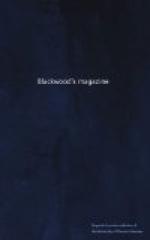We cannot think that a great instinctive movement which seems, although with a widely extended range in respect to tine, to pervade the entire mass of salmon along our universal shores, should in any way depend upon so casual an occurrence as an onslaught by seals and porpoises, or that fear rather than love should force them to seek the “pastoral melancholy” of the upper streams and tributaries. That seals are destructive to salmon, and all other fishes which frequent our shores or enter our estuaries, is undoubted; but we have no proof beyond the general allegation, that porpoises pursue a corresponding prey. Our own researches certainly lead to an opposite conclusion. The ordinary food of the cetacea, notwithstanding their enormous bulk, is minute in size; and we have never been informed, on good authority—that is, on direct testimony—that even herrings have ever been detected in the stomach of a porpoise. Yet we have careful notes of the dissection of these creatures, taken from specimens slaughtered in the midst of millions of herrings; and these notes show that the minute food with which the sea was swarming, and which formed the sustenance for the time of the smaller fishes, also constituted the food of the cetacea, which were merely gamboling through the herring shoals.
It is certainly, however, difficult to explain the motives by which the early spring salmon are actuated in ascending rivers, seeing that they never spawn till autumn at the soonest. We must remember, at the same time, that they are fresh-water fishes, born and bred in our own translucent streams, and that they have an undoubted right to endeavour to return there when it suits their own inclination. It may be, that although the ocean forms their favourite feeding-ground, and their increase of size and continuance in high condition depend upon certain marine attributes, which, of course, they can find only in the sea, yet the healthy development of the spawn requires a long-continued residence in running waters. We have ascertained, by experiment, that the ova of salmon, after being deposited, will make no progress in still water; and we cannot illustrate this portion of the subject better than by transcribing a paragraph from a letter, addressed to us in spring, (11th April 1843,) by Mr Andrew Young of Invershin, the manager of the Duke of Sutherland’s extensive salmon fisheries in the north of Scotland:—“You are aware that it has been asserted by some of our wisest doctors, that salmon spawn in the sea and in lochs, as well as in rivers. However, as doctors are proverbially allowed to differ, I have this winter




